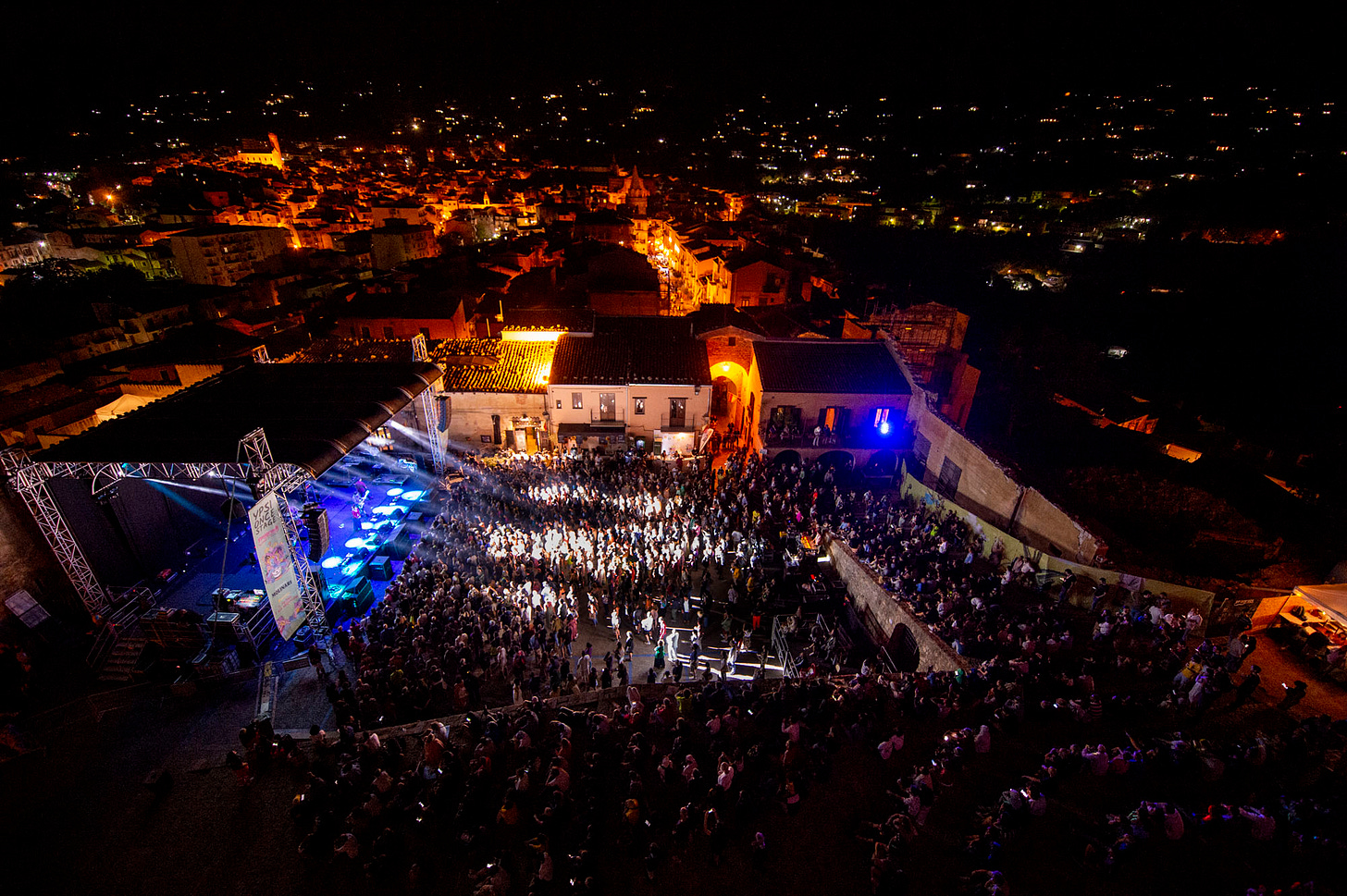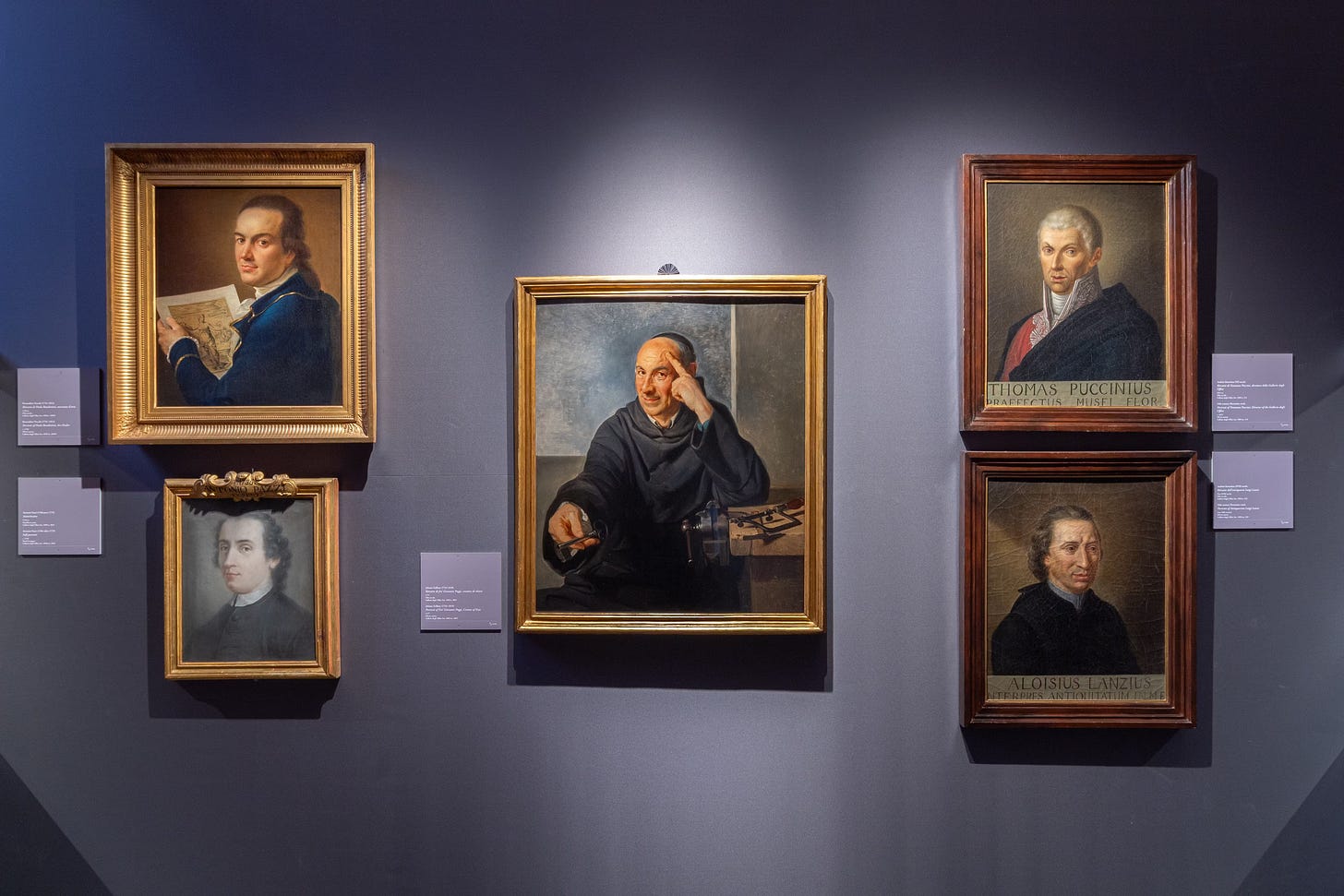Sicily guarantees abortion rights
Plus, touring Oltrepò Pavese and 18th Century art at the Uffizi
The mezzogiorno is often considered a backwards, conservative, underdeveloped part of Italy. Perfectly pleasant for a holiday, sure, but with little to offer from a political standpoint. Of course, this has always been a short-sighted stereotype, and I was reminded of that fact once again this week when I read the news about a new bill the Sicilian parliament just passed. On Wednesday afternoon, Sicily’s regional administration approved legislation put forward by the centre-left PD (disegno di legge n. 738) which will require all obstetrics and gynaecology departments, in all hospitals, without exception, to provide obstacle-free access to abortions. In addition, all hospitals on the island will be required to recruit staff who are qualified and willing to perform the procedure, and those who reject this on religious grounds, or define as conscientious objectors for other reasons, will be moved to other positions. The result? As of this month Sicily will, in theory at least, have some of the strongest legal protections for reproductive rights anywhere in Italy. And the move couldn’t come any sooner. It’s estimated that an astonishing 81,5% of Sicilian gynaecologists currently refuse to perform abortions, with the obvious result that women who want or need to terminate pregnancies are forced to travel or use unregulated services. It remains to be seen if the new law will translate into good practice, of course. But this week’s news is an undeniable step in the right direction towards guaranteeing women not just free choice over their bodies, but the constitutional right to adequate healthcare. The rest of Italy, where around 70% of doctors are conscientious objectors, might actually learn a thing or two here, no? For more details check out this summary by Ilfattoquotidiano (ITA only).
With the work and citizenship referendum campaigns still ongoing, the main politics news this week concerns local elections in some of Italy’s medium-sized cities. Last Sunday, voters went to the polls in Genova, Ravenna, Taranto and Matera, and I’m pleased to report that centre-left coalitions performed extremely well across the board. In Ravenna, which has long been a socialist stronghold, Alessandro Barattoni dominated the competition and easily affirmed himself the new leader of the city’s PD administration. In Genova, meanwhile, a campo largo list including the PD, M5S and AVS joined forces to back an ex-Olympic athlete Silvia Salis as their candidate and it proved an excellent move. Salis successfully won the mayoral position, thereby reclaiming the city from eight years of conservative government. Even in the south, where the conservative right generally holds power, progressive lists performed pretty well. Both Taranto and Matera will hold second round run-off votes in June, and, at the time of writing, progressive lists are in the lead in both cities. The implications are potentially serious. According to most polls, the centre right and far-right parties are in the lead at national level. Time and again, however, as we saw in Trentino a couple of weeks ago, the centre left is over-performing against all expectations in the actual elections and regaining some degree of power at municipal level. It’s probably too soon to draw any conclusions but, slowly but surely, resistance to Meloni is growing.

With summer now here, the newspapers are back to talking about over-tourism with a vengeance. The streets are crowded, visitor numbers are apparently up, and many, many journalists are complaining about the consequences with varying degrees of rational and irrational criticism. I’ve covered over-tourism a lot of times in this newsletter, and I’m sure I’ll be doing so again in another edition. This week, however, I simply want to draw your attention to another travel piece that’s highlighting an alternative holiday destination for people that already know Italy fairly well. Last week the Guardian’s Liz Boulter published a neat little guide to the Oltrepò Pavese area in Lombardia. I’ve never visited myself, but I can vouch that the area produces some of the best sparkling wine in the country, especially for lovers of pinot nero bubbles. Wine-talk aside, anyway, I really enjoyed reading Boulter’s account of Oltrepo’s medieval history, its lush looking landscapes as well as its lesser-known gastronomic pleasures. If you’re looking for the kind of break where “it is possible to walk, cycle or drive for miles without seeing anyone,” this might be for you (oh and given the proximity to the Ligurian coastline Oltrepo also makes a perfect inland base for reaching the far more expensive Riviera…). Here’s the link for further inspiration.
Arts and Culture: Enlightened Energies
If you’re planning on being in or around Florence anytime over the next six months, make sure you add the latest exhibit at the Uffizi Galleries to your to-do list. Yesterday afternoon, doors opened on the museum’s latest show ‘Florence and Europe. Arts of the Eighteenth Century’, which is curated by the Director Simone Verde and the art historian Alessandra Griffo — and it sounds promising indeed! Most visitors to the Uffizi, understandably, find themselves beelining towards the Renaissance masterpieces. Many forget, however, that the museum also has one of the richest Enlightenment art collections anywhere in Europe. This exhibition therefore kicks off where many visitors end their tours, namely on the ground floor with works by Goya, Tiepolo, Canaletto, Le Brun, Liotard and Mengs to name just a few. According to the press release, visitors will be able to admire sketchbooks and paintings from various Grand Tour artists, witness a live restoration of Pierre Subleyras’s ‘Mystic Marriage of St. Catherine’ (1746), and even explore a mysterious ‘Cabinet of Erotic Antiquities’ which, apparently, inspired some of the Marquis de Sade’s more outlandish writings. I’ll be heading to the exhibition in a couple of weeks’ time and will make sure to write up my thoughts somewhere soon. In the meantime, find out more and get your tickets here.
It's the same story every year: as soon as the temperatures start climbing in June the majority of my friends and colleagues rush away to the coast or even abroad to escape the city heat. I get the rationale, certainly, but with so much else going on, at least in the first part of the summer, I can’t help thinking it’s just a bit of a waste to spend too much of this period sitting on a lido. This week, Elle magazine published an excellent (ITA only) overview of some of the best Italian festivals for summer 2025 and if you’ll be around here over the next few months, I highly recommend you check it out and book yourself some tickets. Because there are a lot of great tips. Take the Prima Estate Festival at the Lido di Camaiore, which includes Mogwai and St. Vincent in the line-up, or the Be Alternative Festival, which is bringing some of the best Italian underground indie artists together in Cosenza. Or how about Terraforma, an itinerant ambient and experimental electronica party which is touring Rome, Milan and Palermo? Or Vox Marmoris, which is, basically, a massive rave right next to the Carrara marble mines? I have one addition of my own for the list too. Ypsig rock, a small indie festival in the Sicilian town of Castelbuono, is one of the best summer events I’ve ever been to. And with this year’s August lineup including Lambrini Girls, Wu Lyf and Cocorosie I really recommend you check it out. If nothing else just look at how gorgeous the venue is…

Recipe of the Week: Italian Stuffed Mussels (Two Ways)
This week’s recipe is something I find myself preparing every year at the start of June: Puglian-style mussels stuffed with breadcrumbs. This is a simple, rustic dish that fishmen from Bari to Gallipoli used to (and still do) eat without much fanfare, but its also increasingly popping up on menus in fancy eateries in Milan, London, NYC and beyond. There are a million ways to stuff mussels and, with the weekend approaching, I’m still undecided what recipe I’m going to use. In fact, I’ve got two for you. Rachel Roddy suggests a simple version; an oregano heavy breadcrumb mix with wine and garlic as the main “flavour bombs”, and a short cooking time of just 3 minutes. If this is your first time stuffing mussels, I’d stick with her instructions. If you’re a seasoned pro, on the other hand, you might want to experiment with Katie Parla’s maximalist suggestion in which she adds tuna to the mix and preps a tomato sauce before roasting the whole lot in the oven for 30-40 minutes. A final note on prep. It goes almost without saying that stuffing mussels is a fiddly affair. If you’re buying fresh sea sourced molluscs make sure to soak them briefly in water and to trim all the beards and barnacles (see this guide for help). Alternatively, I recommend using farmed and pre-cleaned mussels. It’s a lot less hassle and, by the way, much better for the environment too.

I’m Jamie Mackay, a UK-born, Italy-based writer, working at the interfaces of journalism, criticism, poetry, fiction, philosophy, travelogue and cultural-history. I set up ‘The Week in Italy’ to make a space to share a regular overview of the debates and dilemmas, innovations and crises that sometimes pass under the radar of our overcrowded news feeds, to explore politics, current affairs, books, arts and food. If you’re a regular reader, and you enjoy these updates, I hope you’ll consider becoming a supporter for EUR 5.00 per month. I like to think of it as a weekly catch-up chat over an espresso. Alternatively, if you’d like to send a one-off something, you can do so via PayPal using this link. Grazie!






